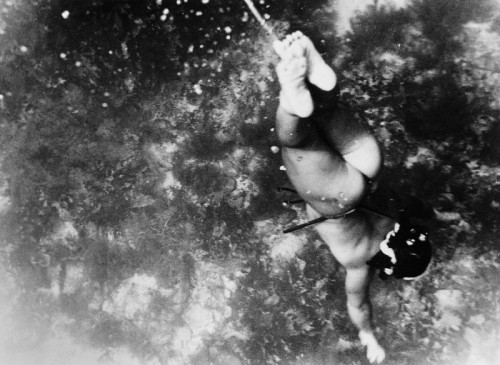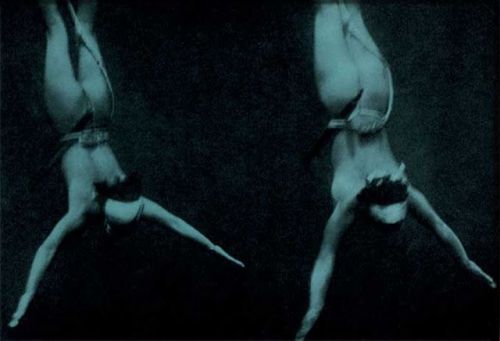I Think The Coolest Thing Would Be To See A New Color
i think the coolest thing would be to see a new color
More Posts from Philosophical-amoeba and Others
Why do we love?

Ah, romantic love; beautiful and intoxicating, heart-breaking and soul-crushing… often all at the same time! Why do we choose to put ourselves though its emotional wringer? Does love make our lives meaningful, or is it an escape from our loneliness and suffering? Is love a disguise for our sexual desire, or a trick of biology to make us procreate? Is it all we need? Do we need it at all?
If romantic love has a purpose, neither science nor psychology has discovered it yet – but over the course of history, some of our most respected philosophers have put forward some intriguing theories.

1. Love makes us whole, again / Plato (427—347 BCE)
The ancient Greek philosopher Plato explored the idea that we love in order to become complete. In his Symposium, he wrote about a dinner party at which Aristophanes, a comic playwright, regales the guests with the following story. Humans were once creatures with four arms, four legs, and two faces. One day they angered the gods, and Zeus sliced them all in two. Since then, every person has been missing half of him or herself. Love is the longing to find a soul mate who will make us feel whole again… or at least that’s what Plato believed a drunken comedian would say at a party.


2. Love tricks us into having babies / Schopenhauer (1788-1860)
Much, much later, German philosopher Arthur Schopenhauer maintained that love, based in sexual desire, was a “voluptuous illusion”. He suggested that we love because our desires lead us to believe that another person will make us happy, but we are sorely mistaken. Nature is tricking us into procreating and the loving fusion we seek is consummated in our children. When our sexual desires are satisfied, we are thrown back into our tormented existences, and we succeed only in maintaining the species and perpetuating the cycle of human drudgery. Sounds like somebody needs a hug.


3. Love is escape from our loneliness / Russell (1872-1970)
According to the Nobel Prize-winning British philosopher Bertrand Russell we love in order to quench our physical and psychological desires. Humans are designed to procreate; but, without the ecstasy of passionate love, sex is unsatisfying. Our fear of the cold, cruel world tempts us to build hard shells to protect and isolate ourselves. Love’s delight, intimacy, and warmth helps us overcome our fear of the world, escape our lonely shells, and engage more abundantly in life. Love enriches our whole being, making it the best thing in life.


4. Love is a misleading affliction / Buddha (~6th- 4thC BCE)
Siddhartha Gautama. who became known as ‘the Buddha’, or ‘the enlightened one’, probably would have had some interesting arguments with Russell. Buddha proposed that we love because we are trying to satisfy our base desires. Yet, our passionate cravings are defects, and attachments – even romantic love – are a great source of suffering. Luckily, Buddha discovered the eight-fold path, a sort of program for extinguishing the fires of desire so that we can reach ‘nirvana’ – an enlightened state of peace, clarity, wisdom, and compassion.


5. Love lets us reach beyond ourselves / Beauvoir (1908-86)
Let’s end on a slightly more positive note. The French philosopher Simone de Beauvoir proposed that love is the desire to integrate with another and that it infuses our lives with meaning. However, she was less concerned with why we love and more interested in how we can love better. She saw that the problem with traditional romantic love is it can be so captivating that we are tempted to make it our only reason for being. Yet, dependence on another to justify our existence easily leads to boredom and power games.

To avoid this trap, Beauvoir advised loving authentically, which is more like a great friendship: lovers support each other in discovering themselves, reaching beyond themselves, and enriching their lives and the world, together.


Though we might never know why we fall in love, we can be certain that it’ll be an emotional rollercoaster ride. It’s scary and exhilarating. It makes us suffer and makes us soar. Maybe we lose ourselves. Maybe we find ourselves. It might be heartbreaking or it might just be the best thing in life. Will you dare to find out?
From the TED-Ed Lesson Why do we love? A philosophical inquiry - Skye C. Cleary
Animation by Avi Ofer

Samurai armour.
A chart I made showing the names of the various main components of a suit of “modern samurai armour” or tosei gusoku. Tosei gusoku refers to armour worn by samurai that began to appear during the middle of the Muromachi Period (1337-1573) with the introduction of firearms.
A full suit of tosei gusoku as shown in my chart would have weighed in at around 30 kilograms or so including weapons - there is after all a considerable amount of iron plates and lacing!
Lower class samurai such as foot soldiers (ashigaru) would have carried their own rations, bedding, and other equipment, but their armour was somewhat lighter being generally less ornamented.
At this point in time, known in Japanese history as the Sengoku Period or the Warring States Period, the most common samurai weapon was the spear followed by the bow and arrow. The sword at this point in time was a secondary weapon relied upon during close combat.
The sword carried during this period was the longer, gracefully curved tachi and was worn edge down on the left side supported either by it’s own tachi mounting (tachi koshirae) or by using a special leather “sling” (koshiate) if it was mounted without hangers (ashi).
Another shorter sword called a chisagatana - literally “little sword” - was carried together with the tachi at the left hip up until the Momoyama period (1573-1603) when it was abandoned. The chisagatana was originally a throw away weapon reserved for use by conscript foot soldiers (ashigaru), but higher ranking samurai soon took up the carrying of one as a back up weapon.
Higher ranked samurai, those in charge of troops and generals in particular, also carried a short stout blade called a metezashi at the right hip, with the handle facing forwards. This weapon was designed for extreme close combat and used to penetrate the weak spots in an opponents armour. When swords were crossed, the metezashi could be drawn with the left hand and thrust into the opponent’s armpits. It could also be drawn with the right hand and thrown underarm in an instant to distract and stun an opponent before following up with the sword.
© James Kemlo







The Christopher Robin Story Book from When we were very young, Now we are six, Winnie the Pooh, The House at Pooh Corner by AA Milne Illustrated by Ernest H Shepard London Methuen & Co Ltd. First Edition 1929

Barefoot to school… Clogher, Co Tyrone, Ireland, from the Rose Shaw collection



David Bowie (1947-2016) at Kyoto - Japan - 1980
Photos by Sukita Masayoshi 鋤田 正義

Sleep suppresses brain rebalancing
Why humans and other animals sleep is one of the remaining deep mysteries of physiology. One prominent theory in neuroscience is that sleep is when the brain replays memories “offline” to better encode them (“memory consolidation”). A prominent and competing theory is that sleep is important for re-balancing activity in brain networks that have been perturbed during learning while awake. Such “rebalancing” of brain activity involves homeostatic plasticity mechanisms that were first discovered at Brandeis University, and have been thoroughly studied by a number of Brandeis labs including the Turrigiano lab. Now, a study from the Turrigiano lab just published in the journal Cell shows that these homeostatic mechanisms are indeed gated by sleep and wake, but in the opposite direction from that theorized previously: homeostatic brain rebalancing occurs exclusively when animals are awake, and is suppressed by sleep. These findings raise the intriguing possibility that different forms of brain plasticity – for example those involved in memory consolidation and those involved in homeostatic rebalancing – must be temporally segregated from each other to prevent interference.
The requirement that neurons carefully maintain an average firing rate, much like the thermostat in a house senses and maintains temperature, has long been suggested by computational work. Without homeostatic (“thermostat-like”) control of firing rates, models of neural networks cannot learn and drift into states of epilepsy-like saturation or complete quiescence. Much of the work in discovering and describing candidate mechanisms continues to be conducted at Brandeis. In 2013, the Turrigiano Lab provided the first in vivo evidence for firing rate homeostasis in the mammalian brain: lab members recorded the activity of individual neurons in the visual cortex of freely behaving rat pups for 8h per day across a nine-day period during which vision through one eye was occluded. The activity of neurons initially dropped, but over the next 4 days, firing rates came back to basal levels despite the visual occlusion. In essence, these experiments confirmed what had long been suspected – the activity of neurons in intact brains is indeed homeostatically governed.
Due to the unique opportunity to study a fundamental mechanism of brain plasticity in an unrestrained animal, the lab has been probing the possibility of an intersection between an animal’s behavior and homeostatic plasticity. In order to truly evaluate possible circadian and behavioral influences on neuronal homeostasis, it was necessary to capture the entire 9-day experiment, rather than evaluate snapshots of each day. For this work, the Turrigiano Lab had to find creative computational solutions to recording many terabytes of data necessary to follow the activity of single neurons without interruption for more than 200 hours. Ultimately, these data revealed that the homeostatic regulation of neuronal activity in the cortex is gated by sleep and wake states. In a surprising and unpredicted twist, the homeostatic recovery of activity occurred almost exclusively during periods of activity and was inhibited during sleep. Prior predictions either assumed no role for behavioral state, or that sleeping would account for homeostasis. Finally, the lab established evidence for a causal role for active waking by artificially enhancing natural waking periods during the homeostatic rebound. When animals were kept awake, homeostatic plasticity was further enhanced.
This finding opens doors onto a new field of understanding the behavioral, environmental, and circadian influences on homeostatic plasticity mechanisms in the brain. Some of the key questions that immediately beg to be answered include:
What it is about sleep that precludes the expression of homeostatic plasticity?
How is it possible that mechanisms requiring complex patterns of transcription, translation, trafficking, and modification can be modulated on the short timescales of behavioral state-transitions in rodents?
And finally, how generalizable is this finding? As homeostasis is bidirectional, does a shift in the opposite direction similarly require wake or does the change in sign allow for new rules in expression?











Singapore Food (in Manga/Anime) Appreciation Post!
(Also: Onion Chopping Ninja Reveals Her Timezone!)
It’s Singapore’s National Day today (9th Aug) and I was going to do a Singaporean-based Recipe, (like Hayama’s Curry Fish Head), but didn’t have time to, so here’s a Singapore Food in Manga/Anime Appreciation Post - from Kuragehime, Shokugeki no Souma, and Addicted to Curry!
The Singaporean food that is usually shown in manga/anime is usually either curry-based or chicken rice. And of course, I don’t usually make them at home because: 1. They’re easier to make in bulk 2. You can get them cheaper outside 3. My version would pale in comparison to the masters’ 4. It requires hours of preparation, except for some of the easier curry dishes in Addicted to Curry. (A manga cap of the recipe is above!)
Addicted to Curry lists Singapore as Curry Central, and I never realized how true that was until I went abroad for a couple of years and missed how we would just drown everything in curry, especially for mixed rice dishes like Chap Chye Png and Nasi Briyani. There was also a huge uproar when McDonald’s ran out of Curry Sauce for McNuggets (they have since started selling it in bottles), and a near-riot when a neighbour complained about the smell of another neighbour cooking curry. Also, Gordon Ramsay can’t beat our laksa, even though I think that particular store he challenged isn’t the best one.
(Not everything is curry, of course, but if there’s no curry, generally, there must be chili. And woe betide those who eat the wrong kind of chili with the wrong kind of food. And here’s a PSA for foreigners - Chili Crab is largely for tourists. Take Black Pepper Crab or Salted Egg Crab instead. It’s possible to live as a weak sauce who can’t take spicy foods here, but less exciting. )
Happy 51st Birthday, Singapore! Here’s to the spread of our food all over the world! And a birthday wish would be for more kinds of our food to be shown in manga/anime. :D - O.C.N.

PS: By the way, Eizan Senpai, you can get Hainanese Chicken Rice for $3, and it is considered Street Food even though there are $30+ versions at hotels. Never eaten one with Jidori Chicken, though.
Do you any tips about using ms paint?
I think I have few tips
#1Use 500x500 px or bigger canvas size. Any smaller size will make a brush look messy and shit.Here look:


Can you see the difference?? Lineart in 600x600 px is so much smoother
#2

#3

#4 RIGHT MOUSE BUTTON YOU NEED IT

#5


*:・゚✧it’s like manga : *✧・゚
that’s all tbh
i hope this was somewhat helpful
im putting together a couple of scottish folk mixes bc that’s what i do and im honestly curious if anyone in my country has ever been unequivocally happy about anything ever










The Last Japanese Mermaids
For nearly two thousand years, Japanese women living in coastal fishing villages made a remarkable livelihood hunting the ocean for oysters and abalone, a sea snail that produces pearls. They are known as Ama. The few women left still make their living by filling their lungs with air and diving for long periods of time deep into the Pacific ocean, with nothing more than a mask and flippers.
In the mid 20th century, Iwase Yoshiyuki returned to the fishing village where he grew up and photographed these women when the unusual profession was still very much alive. After graduating from law school, Yoshiyuki had been given an early Kodak camera and found himself drawn to the ancient tradition of the ama divers in his hometown. His photographs are thought to be the only comprehensive documentation of the near-extinct tradition in existence
-
 blissygelabwisteria liked this · 2 months ago
blissygelabwisteria liked this · 2 months ago -
 the-forever-obsessed reblogged this · 3 months ago
the-forever-obsessed reblogged this · 3 months ago -
 oddgrapes reblogged this · 3 months ago
oddgrapes reblogged this · 3 months ago -
 oddgrapes liked this · 3 months ago
oddgrapes liked this · 3 months ago -
 silksoniccc reblogged this · 4 months ago
silksoniccc reblogged this · 4 months ago -
 clearly-wrong liked this · 4 months ago
clearly-wrong liked this · 4 months ago -
 cat-tyy reblogged this · 5 months ago
cat-tyy reblogged this · 5 months ago -
 elizabethswitch liked this · 5 months ago
elizabethswitch liked this · 5 months ago -
 zerokrox-blog liked this · 5 months ago
zerokrox-blog liked this · 5 months ago -
 ravenmacduff reblogged this · 5 months ago
ravenmacduff reblogged this · 5 months ago -
 ravenmacduff liked this · 5 months ago
ravenmacduff liked this · 5 months ago -
 spacebetweenheartbeats reblogged this · 6 months ago
spacebetweenheartbeats reblogged this · 6 months ago -
 anna1wh3q liked this · 7 months ago
anna1wh3q liked this · 7 months ago -
 deviledeggi reblogged this · 7 months ago
deviledeggi reblogged this · 7 months ago -
 baxground-blog reblogged this · 8 months ago
baxground-blog reblogged this · 8 months ago -
 deviledeggi liked this · 8 months ago
deviledeggi liked this · 8 months ago -
 blutig-hund reblogged this · 8 months ago
blutig-hund reblogged this · 8 months ago -
 cherriedash reblogged this · 8 months ago
cherriedash reblogged this · 8 months ago -
 summerdazee liked this · 8 months ago
summerdazee liked this · 8 months ago -
 ghostblogging liked this · 8 months ago
ghostblogging liked this · 8 months ago -
 lowkeylaff reblogged this · 8 months ago
lowkeylaff reblogged this · 8 months ago -
 sjwcringecompilation liked this · 8 months ago
sjwcringecompilation liked this · 8 months ago -
 nunporn liked this · 8 months ago
nunporn liked this · 8 months ago -
 creepy-scrawl reblogged this · 8 months ago
creepy-scrawl reblogged this · 8 months ago -
 got-you-where-i-want-you reblogged this · 8 months ago
got-you-where-i-want-you reblogged this · 8 months ago -
 evatalis reblogged this · 9 months ago
evatalis reblogged this · 9 months ago -
 evatalis reblogged this · 9 months ago
evatalis reblogged this · 9 months ago -
 evatalis liked this · 9 months ago
evatalis liked this · 9 months ago -
 brightclaws5tudios reblogged this · 9 months ago
brightclaws5tudios reblogged this · 9 months ago -
 brightclaws5tudios liked this · 9 months ago
brightclaws5tudios liked this · 9 months ago -
 boothyghost reblogged this · 9 months ago
boothyghost reblogged this · 9 months ago -
 mustardizer liked this · 9 months ago
mustardizer liked this · 9 months ago -
 clowneryandshenanegans liked this · 9 months ago
clowneryandshenanegans liked this · 9 months ago -
 araccoonthatlikesmurder liked this · 9 months ago
araccoonthatlikesmurder liked this · 9 months ago -
 scopophobia-polaris liked this · 9 months ago
scopophobia-polaris liked this · 9 months ago -
 awitchoflife liked this · 9 months ago
awitchoflife liked this · 9 months ago -
 isaiahomega reblogged this · 9 months ago
isaiahomega reblogged this · 9 months ago -
 godmodebeginswithlesbians reblogged this · 9 months ago
godmodebeginswithlesbians reblogged this · 9 months ago -
 plutoprophecy liked this · 9 months ago
plutoprophecy liked this · 9 months ago -
 ace-does-stuff reblogged this · 9 months ago
ace-does-stuff reblogged this · 9 months ago -
 dampfnudeldove liked this · 9 months ago
dampfnudeldove liked this · 9 months ago -
 mercurialdispositions reblogged this · 9 months ago
mercurialdispositions reblogged this · 9 months ago -
 imthatwannabeauthor liked this · 9 months ago
imthatwannabeauthor liked this · 9 months ago -
 l-art-stuff-l reblogged this · 9 months ago
l-art-stuff-l reblogged this · 9 months ago -
 gabbbysstuff reblogged this · 9 months ago
gabbbysstuff reblogged this · 9 months ago -
 wackywithabitofhorror liked this · 10 months ago
wackywithabitofhorror liked this · 10 months ago
A reblog of nerdy and quirky stuff that pique my interest.
291 posts